A brief history of Police Scotland Mountain Rescue Team (Tayside) as it clocks up 50 years
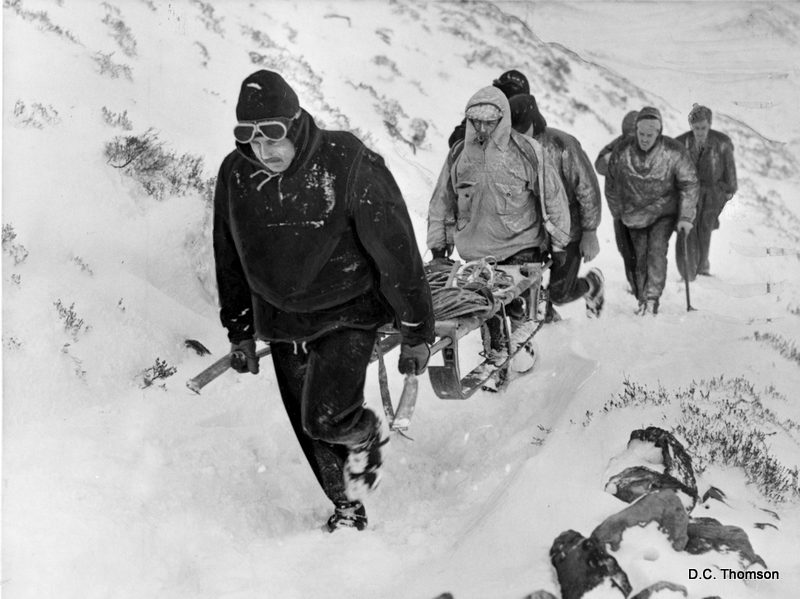
A brief history of Police Scotland Mountain Rescue Team (Tayside) as it clocks up 50 years
Research and words by Constable Paul Morgan, Team Leader of Police Scotland Mountain Rescue Team (Tayside)
When five hillwalkers were reported overdue on their walk along Jock’s Road between Braemar and Glen Doll on New Year’s day in 1959, the incident sparked off a ten-week search involving police officers, gamekeepers and members of the public from both Deeside and Angus, as well as the RAF Mountain Rescue Service. The winter conditions were the worst on record, so it took many weeks to recover all five bodies from the deep snow. A key player in this incident was Constable Thomas ‘Tam’ Deas, a rural officer working in Angus who had a keen interest in the hills. He was directly involved in the recovery of the bodies over the many weeks that followed and two key things undoubtedly stuck with him: the benefits of having a dedicated RAF rescue team on hand to help in such an organised manner and also the voluntary help the police received from members of the public.

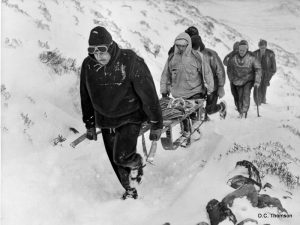
The event also clearly struck a chord over the district boundary in Deeside; it was the catalyst for the Chief Constable of the then Scottish North East Counties Constabulary to ask for volunteers to join the new Police Mountain Rescue Team in Aberdeenshire (subsequently called the Grampian Police MRT). It was founded in April 1960 and became the UK’s first Police MRT.
During the twelve years that followed the Glen Doll incident, two significant factors led to a realisation that an organised mountain rescue team was needed in Angus. The first was the country-wide increase in the popularity of hillwalking and climbing. The second and more worrying fact was that estates were significantly reducing the number of gamekeepers and shepherds they employed which meant that when a mountain incident was reported, fewer knowledgeable land workers were available to assist with rescue efforts.
In 1971, the Chief Constable of Angus Constabulary, in discussion with both Tam Deas and first Team Leader Sgt Bill Yule, agreed that a formal police team should be established to cover the Angus Glens – especially Glen Doll. Using the model established by the Grampian Police MRT, the newly formed Angus Constabulary MRT comprised twelve members led by Sgt Yule initially, then by Inspector Deas. One very notable member of this new team was Special Constable Reg Fawcett who, although not a policeman by profession, was welcomed into the group as a very capable police volunteer. Then in November 1973, six members of the team attended a mountain rescue course in Fort William run by the Lochaber MRT and were trained in various techniques, including technical stretcher work. On their return from this course, the trained members worked with the rest of the team in the skills acquired. Additional training was provided by the now well-established Grampian Police MRT led by Sgt Duff.
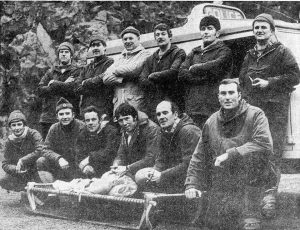
Police Scotland (Tayside) in 1971
In 1975, Regionalisation resulted in the merger of Angus Constabulary, Dundee City Police and Perth & Kinross Constabulary into Tayside Police. What had been the Angus Constabulary MRT continued to be the only resource in this new area, attending incidents all over Tayside from a single base in Forfar. Later in 1975, an increase in incidents in Perthshire led to a request from Chief Superintendent Watt to the Deputy Chief Constable for a Perthshire-based wing of the Team. Thus Tayside Police MRT was created and re-named to reflect the new area of operations. The newly titled team was formally affiliated to the MRCofS later that same year.
By 1976, the number of rescues that had taken place in Glen Doll had reached a point where the Police Team needed more formalised support from the public. This led to the establishment of the Tayside Mountain Rescue Association and the volunteer Tayside MRT by willing members of various Dundee mountaineering clubs.
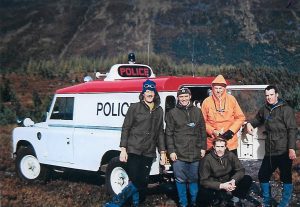
Team members at Glen Doll in the 1970s
In the 1990s the Tayside Police MRT was renamed the Tayside Police Search and Rescue Unit to reflect a remit that extended beyond mountain rescue; it was used increasingly for other tasks within the police service such as low ground and crime searches. Then in 2013 it was renamed Police Scotland (Tayside) MRT following the creation of the new national Police Service.
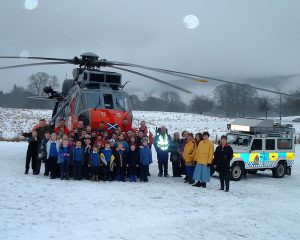
Police Scotland (Tayside) in 2005
At the present time, the team is led by PC Paul Morgan with a team compliment of sixteen members based across the region. Rescue vehicles and equipment are held at Forfar, Baluniefield (Dundee) and Perth Police Offices. This set-up is mirrored by Tayside MRT which has three bases at Dundee, Blairgowrie and Aberfeldy. The police and volunteer teams complement one another not only in regard to the way they are physically structured (as just described) but also in terms of their joint monthly training programme, their use of similar vehicles/equipment and shared use of all six bases. The sixteen officers in the team carry out their mountain rescue roles in addition to their core police duties. At present, officers work in Roads Policing, Community Safety, Cyber Crime, CID and Response Policing across Dundee, Angus and Perthshire. When a search and rescue incident is reported, they are called upon from whatever duty they are involved in, or whilst off-duty, and muster at the rescue bases to deploy along with members of the Tayside MRT. However, if the circumstances dictate a danger to the public or if an incident is part of a specific police investigation, they can deploy as a police team only.
Prior to 2020, the annual number of callouts averaged mid-40’s, however in 2000, 2021 & 2022 the number rose to 75, 82 and 82 (again) respectively. Over and above obvious mountain rescue incidents, the team conducts lowland and countryside searches for missing persons, evidential searches, body recovery duties in complex environments and assists conventional police colleagues when required. In addition, given the number of rivers, gorges and lochs in Tayside, all members are trained to operate either in or near water and work in close partnership with the Scottish Fire and Rescue Service to provide a full water search and rescue capability.
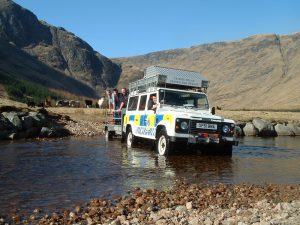
Police Scotland (Tayside) in more recent times
Team members attend monthly training sessions with members of the Tayside volunteer team and also complete two, four-day blocks of training during the winter months. In addition, and like all members of Scottish Mountain Rescue, the officers attend national courses in rigging, avalanche rescue and casualty care, etc. Furthermore, team members work closely with their volunteer colleagues and assist with fundraising activities in their own time on behalf of Tayside Mountain Rescue Association as well as delivering mountain rescue talks to groups across Tayside to raise awareness of the Association’s charity work.
The team’s area of operation covers an area of almost 3,000 square miles, extending from the Angus Glens in the east to Drumochter in the north and Kinross to the south. It also includes waterways such as Lochs Tay, Lyon, Rannoch, Ericht and Earn. The team’s boundary is adjacent to several other teams including the Killin, Ochils, Braemar and Aberdeen teams with whom it works when required. Needless to say, the team also works with police MRT colleagues in other areas, as well as the newly formed Police MRT in the Highlands.
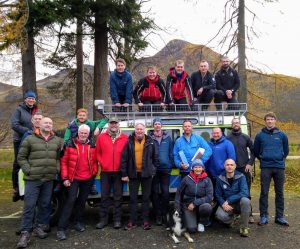
Police Scotland (Tayside)
Now in its 53rd year of operation, team members continue their dedicated commitment to help the public and are very proud of their close working partnership with their volunteer colleagues. Inspector Tam Deas, Sgt Bill Yule and their colleagues who set out on the rescue journey back in the 1970s would be very proud of their legacy.